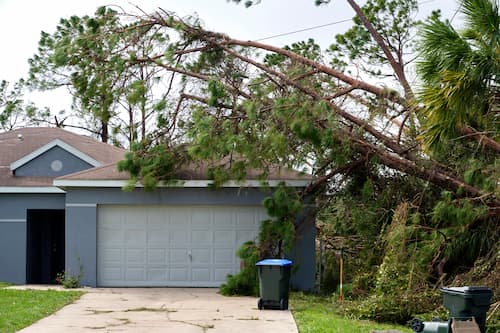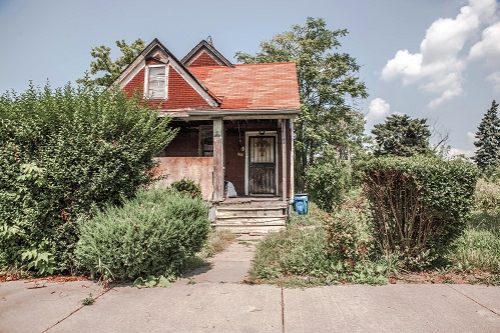How does home insurance cover tornado damage?
Home insurance covers tornado damage to your home, other structures on your property and your personal property.
“A standard home insurance policy covers tornado-caused damage to your property’s structure, as well as your home’s contents,” says Mark Friedlander, director of corporate communications for the Insurance Information Institute. “This includes electronics, appliances, clothing and artwork. For a renters policy, your tornado coverage only includes the contents inside your individual rental unit. The building’s structure is covered by the landlord’s insurance policy.”
If flying debris breaks your windows or tears off your roof or siding, it’s covered. If a tree falls onto your house, it’s generally covered. The belongings inside your house are also covered if they get broken or blown away.
One important thing to remember is that flooding is excluded from all homeowners policies. Flooding may occur after a tornado since thunderstorms with heavy rain can accompany the storm. You must purchase a separate flood insurance policy to be covered.
What does home insurance cover after a tornado?
After a tornado, here’s what your home insurance covers and which type of coverage applies:
- Dwelling coverage: Damage to your home’s structure is covered under the dwelling portion of your policy. It includes the roof, windows, siding, shingles, walls and other structural elements.
- Other structures: The other structures portion of your home insurance policy covers any structure that’s on your property but not attached to the house, like a shed.
- Personal property: Damage to your personal belongings is covered under the personal property portion. This includes appliances, artwork, furniture – even clothing.
- Additional living expenses (ALE). If your home becomes uninhabitable because of too much damage, there’s often a loss of use or additional living expenses portion that will pay for you to stay elsewhere while your home is repaired.
Does home insurance cover falling trees from a tornado?
Your home insurance will generally pay for damage from trees that fall on your house during a tornado, but there can be exceptions.
An adjuster usually comes to assess damage to your home when you put in a claim. If the adjuster deems that your tree was in poor shape before the storm -- weak or rotted and likely to fall – your claim could be denied.
If the tree was not on your property, then you would not be considered responsible for it being unhealthy.
How do I file a home insurance claim after a tornado?
If you have damage from a tornado, follow these steps to file a claim:
- Call your insurance company as soon as possible to make a claim. Since so many people will be in the same boat, the insurance companies will be inundated with calls. It’s best to get the ball rolling as quickly as possible.
- Prevent further damage. Your home insurance policy stipulates that you must take steps to prevent any further damage after a loss that could inflate the claim. If it’s safe, cover windows and holes in walls or the roof as best you can.
- Take pictures. Take pictures of all damage on and around your property; if you have before and after pictures, even better.
- Gather receipts and serial numbers of damaged items if you have them.
- Make temporary repairs if your claims adjuster says it’s OK.
- Cooperate with the claims adjuster. Provide any required documentation and answer any questions to ensure things go quickly and smoothly.
Is there a separate deductible for tornado damage?
“In some high-risk areas, tornado coverage may include a separate deductible from your standard policy deductible, similar to how a windstorm deductible is applied in hurricane-prone states,” Friedlander says.
These deductibles can get high. They range from about 1%-5% of your dwelling coverage, so if your home is covered for $300,000, your wind deductible might be as much as $15,000. You’re responsible for the deductible before the insurance company pays their portion.
“Check the declarations page of your insurance policy (at the front of your policy) to review your coverage and deductible levels,” Friedlander says. “If you are not clear about your coverage for tornado damage, contact your insurance agent to review the details of your policy.”





